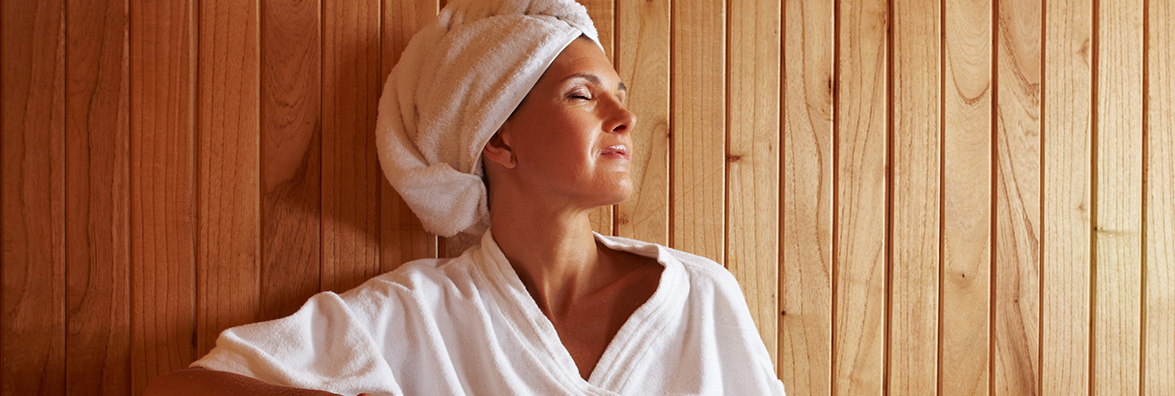Athletes are all about maximizing performance, and sometimes it takes some extra tools to help properly train and recover. Proper recovery is highly important when you are active, both for keeping your body safe and for improving your body’s ability to properly perform. If you are looking to add some tools to your workout routine, there are a number of recovery tools for athletes that you can enjoy at home or pack easily in your gym bag. From infrared saunas to compression massagers, see the best equipment to help you naturally enhance your performance as an athlete.

Infrared Sauna
One of the best tools for athletes is an infrared sauna. When a daily 20-minute session brings health benefits like reduced stress, detoxification, weight loss, and pain relief, infrared sauna use is an easy and effective way to improve your health. On top of the regular health benefits, infrared saunas are great workout recovery tools as they help the muscle recovery process by increasing blood circulation and carrying oxygen-rich blood to oxygen-depleted muscle. Heat also allows muscles to relax better, thus relieving muscle tension.
There are many different ways to enjoy infrared therapy at home, whether you want a personal 1-person sauna, a 5-person sauna for practicing hot yoga, or even a sauna dome that can make your sauna sessions a little more portable. You can also boost your infrared experience with enhancements such as red light therapy to create the ultimate home sanctuary for your health and wellness.
Red Light Tower
Red light therapy, or RLT, is a technique used to help promote healthy cell growth and regeneration through mitochondrial respiration. Today’s practice of red light therapy can be used as an aid for athletes seeking recovery and improved performance. Improved mitochondrial performance allows for less muscle fatigue and stronger, healthier tissue. When paired with infrared technology, these therapies help improve circulation, oxygenation, cellular repair, and cellular reproduction to assist in quicker recovery and better performance.
There are many ways to utilize this therapy by simply placing red light technology near your body, from light towers to handheld devices and face masks. Red light therapy units can be conveniently placed where you need it, from free-standing units to mounted units in your infrared sauna. Because of their versatility, they are some of the top health devices for the home.

Infrared Amethyst Mat
Muscle pain relief, reduced inflammation, increased energy, improved cell health, back pain relief, and faster injury recovery are just a few of the health benefits found in using an amethyst mat with infrared and PEMF (pulsed electromagnetic field) therapy. Amethyst has the ability to produce small magnetic fields, which can help boost the body’s performance through improved blood circulation and cell regeneration. Adding a session on an amethyst after a workout may help your body recover quicker, helping athletes improve their performance.
Massage Gun
For something compact that packs a punch, massage guns have changed the athlete recovery game. Deep muscle work can help speed up recovery and give back range of motion for muscles that are too tight. They also help improve blood circulation to reduce soreness. You can pair a massage gun treatment with products like CBD salves to relieve tension even more. Athletes use these tools to help with warming up, treating cramps before a game, and soothing soreness after a workout. Even better, they fit right in your gym bag!
Inversion Table
Sometimes, being active can have side effects like back pain and injuries. Using an inversion table as part of your athlete recovery routine can help alleviate back tension and pain, making it easier to have the range of motion you need. Inversion tables hold you upside-down, helping your spine elongate and remove pressure from your nerves, offering a beneficial stretch that can also help with resetting back alignment. Many professional athletes use these tables before strength training and during workout cooldown.
Compression Device
Compression devices are some of the best recovery equipment for athletes. These devices use compression to help squeeze their muscles and relieve soreness. By using air to contract and pulse, compression helps increase circulation and reduce lactic acid buildup that typically causes fatigue and decreases mobility. You can find these devices for different parts of your body, including legs, arms, and feet. Use these devices after working out to help speed up your recovery time, especially after tough workouts.
![]()
Sleep Technology
Sleep is an incredibly important factor in athletic performance, as it is when your body really gets to recover. Sleep sensors can help you analyze your sleep to identify any potential problem areas and work toward getting the high-quality sleep your body needs. There are different methods to track your sleep, from wearable technology to sensors that go directly in your bed. Many offer features such as heart rate, snoring, temperature, and blood oxygen data tracking to help pinpoint what changes you can make to turn your bedroom into a recovery sanctuary.
TENS Unit
Transcutaneous electrical nerve stimulation, or TENS, units are a great tool for athletes suffering from stiff or sore muscles. These devices can be found in medical offices or physical therapy settings, but are now available for use at home. TENS units use electrical pulses to stimulate muscles, which helps soothe sore muscles after a workout when something like foam rolling just isn’t doing the trick. Personal TENS units can be taken almost anywhere due to their small size, making them perfect for your gym bag or even your bedside table for some muscle work before bed.
Fitness Tracker
Fitness trackers are made for everyone, from avid athletes who want to track training progress to someone starting their fitness journey. Wearable fitness brands like FitBit, Garmin, and Apple offer robust insights into your health and a plethora of features to help you stay on track. You can set reminders to get up and move, track exercise times, monitor heart rate, check blood oxygen levels, record GPS route and distance, and more with just a simple wristwatch and app that can give you some great data to help you improve your training and performance.
To help improve your physical fitness and performance, investing in recovery equipment for athletes can help you achieve your goals safely and more efficiently. On top of using these tools, always remember to hydrate and avoid pushing yourself past your limits! Taking the time to properly recover and rest will ensure your body stays in its best shape, whether you’re working out at the gym or about to play a big game.
 Canada
Canada Australia
Australia New Zealand
New Zealand Germany
Germany UK
UK EU
EU Ireland
Ireland Malaysia
Malaysia China
China Japan
Japan


 Detoxify Your Whole System
Detoxify Your Whole System




































